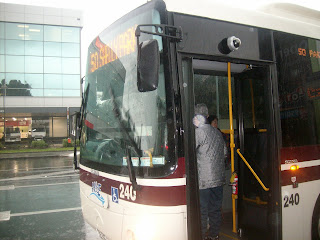 |
| Image 1: An example of an existing bus lane along an Auckland road Source: Maharaj 2011 |
I believe that we need to adopt a similar approach within Auckland. We need to construct more bus lanes. These lanes will allow buses to pass through congested traffic and buses will become more reliable. This will also create shorter journey times, therefore encouraging members of the public to use this public transport service. More people using this service will cause a reduction in car use, which consequently will decrease carbon dioxide emissions, creating a healthier environment and ensuring that Aucklanders are using more sustainable forms of transportation.


